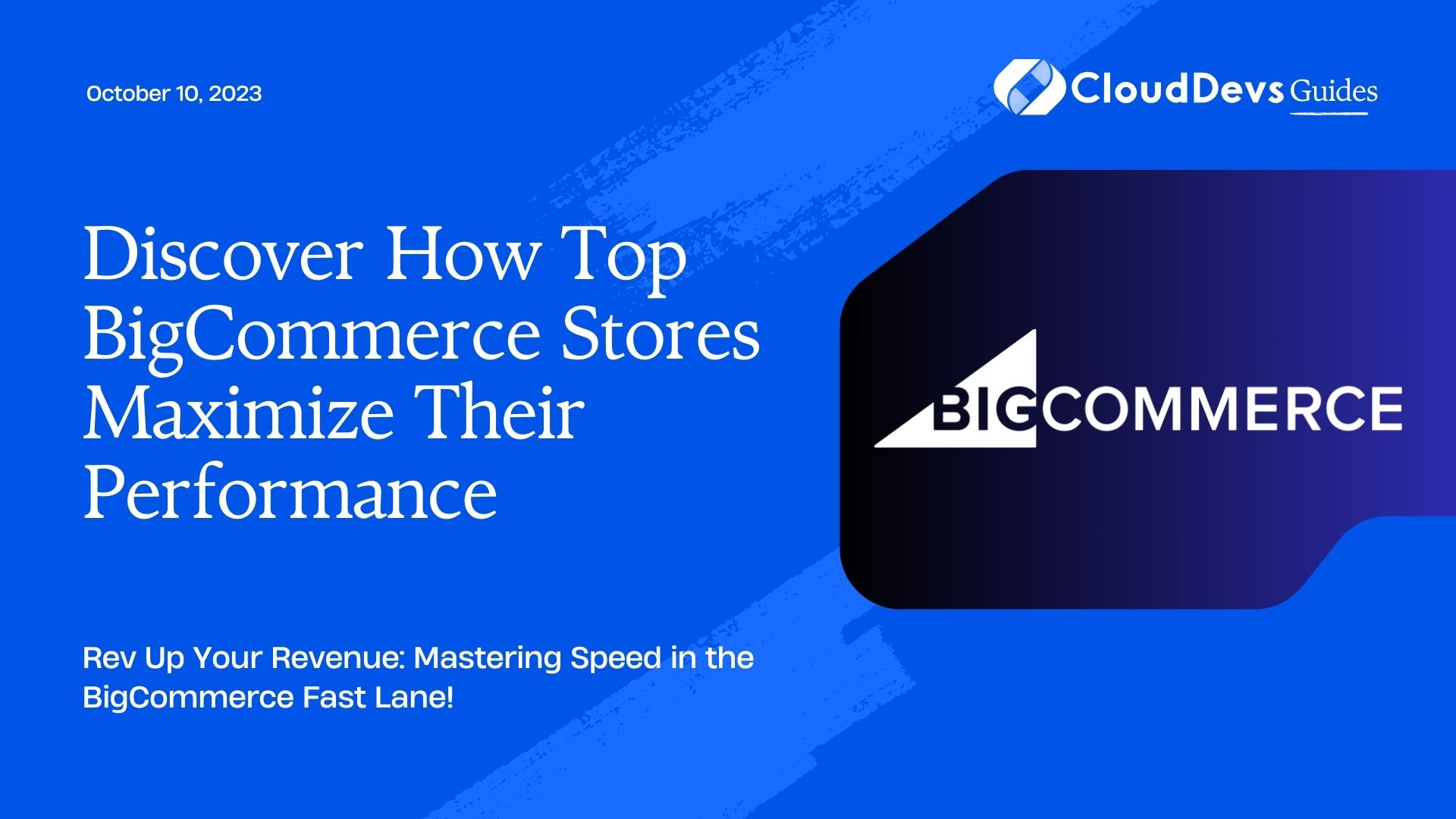Discover How Top BigCommerce Stores Maximize Their Performance
BigCommerce has rapidly become a preferred e-commerce platform for many online businesses due to its flexibility, user-friendliness, and scalability. But like any platform, achieving optimal performance requires a blend of best practices, attention to detail, and often a touch of technical know-how. In this article, we will delve into some of the most effective BigCommerce performance optimization techniques, complete with examples, to help your online store load swiftly and seamlessly.
1. Optimize Images
Before: A product page with a high-resolution image weighing 2.5MB.
After: The same page with an optimized image, reduced to 200KB without losing noticeable quality.
How to Do It: Use tools like TinyPNG, Compressor.io, or ImageOptim. Remember, always strive for a balance between image quality and file size. Additionally, BigCommerce’s Stencil theme engine automatically creates responsive images, but it’s still crucial to upload optimized source images.
2. Minify CSS, JavaScript, and HTML
Before: A website taking several seconds to load due to bloated and unminified code.
After: The website loads noticeably faster after removing unnecessary code, spaces, and comments.
How to Do It: Use tools like JSCompress for JavaScript and CSSNano for CSS. For HTML, you can use HTMLMinifier. Alternatively, BigCommerce themes often have built-in settings for minification, so always check there first.
3. Leverage Browser Caching
Before: Customers visiting your website have to download the same resources every time, leading to slower loading times.
After: With browser caching in place, repeat visitors experience faster load times since many resources are stored locally.
How to Do It: This involves editing your website’s .htaccess file. Set expiry times for various types of content so that browsers know how long to cache them.
4. Utilize Content Delivery Networks (CDN)
Before: An e-commerce site experiencing slower load times for international customers.
After: Faster global loading times due to the use of a CDN that distributes content to servers around the world.
How to Do It: BigCommerce partners with Akamai, and Akamai’s CDN is included with every BigCommerce plan. Make sure to leverage this built-in feature.
5. Reduce HTTP Requests
Before: A page with multiple images, scripts, and stylesheets, initiating numerous HTTP requests and slowing down the site.
After: Consolidated scripts and stylesheets and fewer images, leading to significantly fewer HTTP requests and a quicker load time.
How to Do It: Combine CSS files and JS files where possible. Use CSS sprites for images that are used frequently across your site. Streamline any unnecessary elements from your website.
6. Optimize Web Fonts
Before: A website using multiple font families and styles, causing a drag on performance.
After: A refined choice of essential fonts and styles, ensuring the site remains visually appealing without compromising on speed.
How to Do It: Limit the number of different fonts and font weights. Use tools like Google’s Webfont Loader to control how web fonts are loaded.
7. Prioritize Above-the-Fold Content
Before: Users waiting for the entire page to load before seeing any content.
After: Immediate rendering of above-the-fold content while the rest of the page continues to load.
How to Do It: This can be achieved through a technique called ‘lazy loading’. Images, videos, and other elements below the fold are only loaded when a user scrolls down to them.
8. Review and Optimize Add-Ons and Apps
Before: An e-commerce store bogged down by numerous third-party apps and integrations, some of which are rarely used.
After: A streamlined website with only essential and optimized third-party integrations.
How to Do It: Periodically review and remove any unnecessary apps or integrations. Ensure that the ones you retain are updated and well-coded.
9. Reduce Redirects
Before: A user navigating through several redirects before landing on the desired page, causing frustration and increased load times.
After: A streamlined navigation with minimal redirects, enhancing user experience.
How to Do It: Keep an eye on your site’s URL structure, especially after redesigns or migrations. Use tools like Redirect Path or Screaming Frog to identify and minimize redirects.
10. Regularly Monitor Site Performance
Before: Issues arising on the website go unnoticed until they become significant problems.
After: Proactive identification and resolution of performance bottlenecks.
How to Do It: Use tools like Google PageSpeed Insights, GTmetrix, and Pingdom. Regular monitoring helps you catch and fix issues before they escalate.
Conclusion
In the world of e-commerce, staying ahead of the curve requires both innovation and adaptability. As we’ve explored in this post, top BigCommerce stores maximize their performance through a combination of intuitive design, data-driven decision-making, and customer-centric strategies. By leveraging the platform’s versatile features and integrating best practices, these stores not only enhance their user experience but also boost conversion rates and build lasting customer loyalty. Whether you’re just starting out or looking to refine your online store’s approach, the key is continuous learning and iteration. Embrace the insights and strategies employed by top BigCommerce merchants, and you too can pave the way for e-commerce success.
Table of Contents







